The Escambia County Extension Office works with local nature tourism in a program we call Naturally EscaRosa. Many visitors, and locals, are seeking locations where they can experience nature and view Florida the way it may have appeared before heavy development. Winter time is a good time to get out and hike local trails, or camp at local parks. The beaches have fewer humans but nature is still in action.
The Florida Trail extends from Pensacola to the Everglades, and begins at Ft. Pickens. The old railway between batteries at the fort has been converted into a hiking/biking trail and is a really nice, easy, walk where you can experience the maritime forest, freshwater canals, dunes, and beaches on the same hike.
This trek was conducted in January of 2018. It was overcast and 57°F. Although the “cold bloods” were not moving there was plenty of bird action.
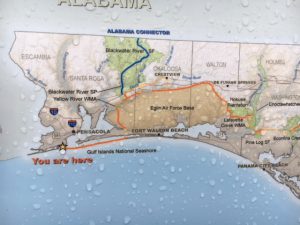
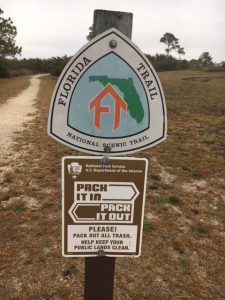
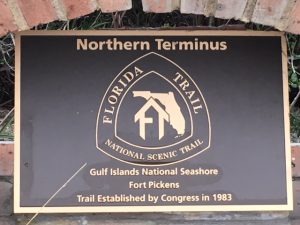
The Florida Trail is about 1000 miles long and begins here in Pensacola at Ft. Pickens. The first 15 mile stretch begins at Ft. Pickens, crosses Pensacola Beach, and heads north towards Milton at Navarre Beach. It’s an easy walk and much of the Gulf Islands National Seashore sections have plenty of wildlife and nature to see, as well as waters to snorkel and swim. There is camping at Ft. Pickens and the trail actually goes through the campground.
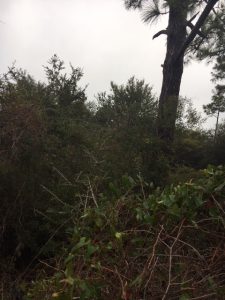
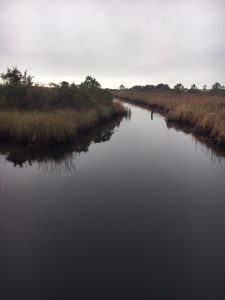

The beginning of the trail cuts through a maritime forest. The plants within the forest must deal with xeric conditions (much like a desert) as well as salt spray, which can kill many other plants.
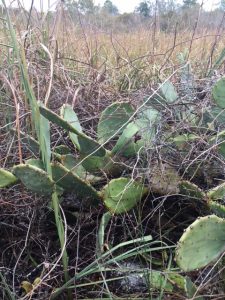
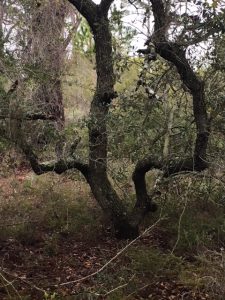

Cactus are another indicator of the dry/xeric conditions found on panhandle barrier islands. The stately Live Oak was sought after by the ship builders of the early Pensacola Navy Yard. In the winter time, cold blooded animals – such as reptiles and amphibians – are hard to find. Warm blooded birds and mammals are quite active. Here you can see the digging activity of the Nine-Banded Armadillo. These animals are quite common on this trail.
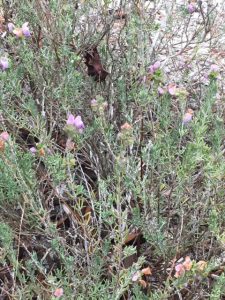
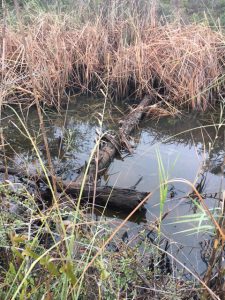
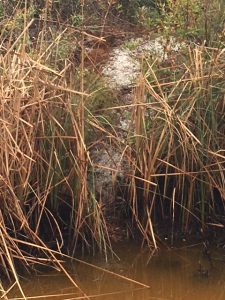
Few plants on our barrier islands bloom during the winter months but False Rosemary, or Beach Heather, is one of them. “Snags” provide habitat for many aquatic animals and, when the weather warms, will be used by the local reptiles for basking. Though snags can be problems for kayakers, they are an important habitat for many aquatic animals. Alligators and otters are just two of the animals that create “slides” along the banks for waterways in the Florida Panhandle. Though rare to see any animal use them, I have seen river otters using them along this trail.
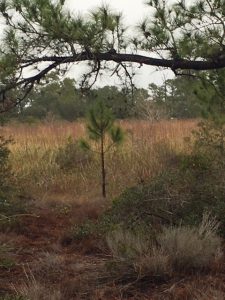

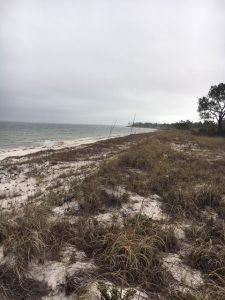
There are side trails off of the Florida along it’s entire route. Here one takes a northern turn towards Pensacola Bay. Low areas within the dune fields can hold water. Though sometimes ephemeral, water sticks around long enough to allow wetland plants – like cattails and bull rushes – to establish themselves. It is good to note the identification of these plants by hikers, for trying to cross one you will realize that you are going to get wet. The sandy dunes of the north side of the panhandle islands typically are heavily vegetated with an assortment of grasses – including the famous sea oat. Field mice, briars, and assorted species of snakes and lizards can be found here in the warmer months. This time of year I found primarily birds – osprey, blue herons, and a bald eagle. The side trail eventually meets Pensacola Bay. From here you can head east to the campground, or west and back to the fort.

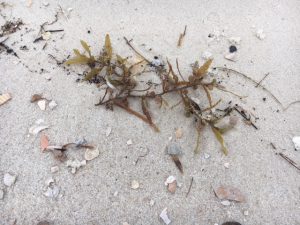
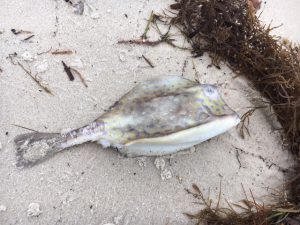
A common feature of our beaches is the wrack. This line of seaweed, seagrass, and other debris shows the height in which the water rose during the last tide or storm. The wrack is often full of decaying plants and, at times, can produce an odor. This triggers locals to rake and remove the wrack. However, these decaying plants provide important nutrients the beach plant community – who may not have nutrients otherwise. On this January day the wrack included Sargassum. A member of the brown algae, Sargassum possess small air bladders (pneumatocyst) that allow them to float near the surface. This is important for these seaweeds in the open ocean because sunlight cannot reach the ocean floor. The scrawled cowfish is a member of a group of fish called “boxfish”. Their fused scales provided a tough armor for protection and give them the “box” shape. There are two spines protruding forwarded from the head of the cowfish. Looking like the horns of a cow, this is where the fish gets its name. This fish is a member of the seagrass community and are very common here. But not so common on shore. This animal probably succumbed during the hard freeze we experienced the week before.
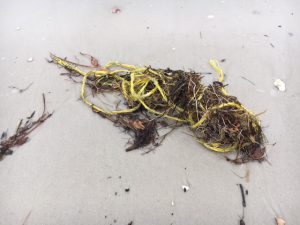
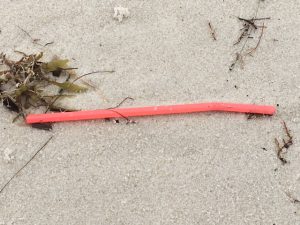
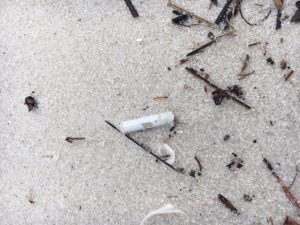
The wrack also captures an assortment of marine debris. This is becoming a larger problem each year. Despite efforts to “reduce, reuse, and recycle”, marine debris continues to wash ashore. As I walked the beach on this January day, it was primarily plastic wrapping (food packages, drink packages, etc.) that I found. Cigarette butts continue to be our number one item. Debris from fishing activities, food, and beverages rank high. We encourage everyone to take a little extra effort to keep these items off of the beaches and out of the waterways. Numerous marine animals either ingest, or become entangled in this debris. The non-profit Ocean Hour cleans area beaches every weekend. Consider volunteering and helping them out when you can.
We will continue to post this nature tour series throughout the year. For 2018 we will focus on our barrier islands, what you can see and do here to find the “real Florida”. If you have questions about creatures or topics featured (or found) on the beach, let us know – we will be glad to help answer your questions.
 0
0
